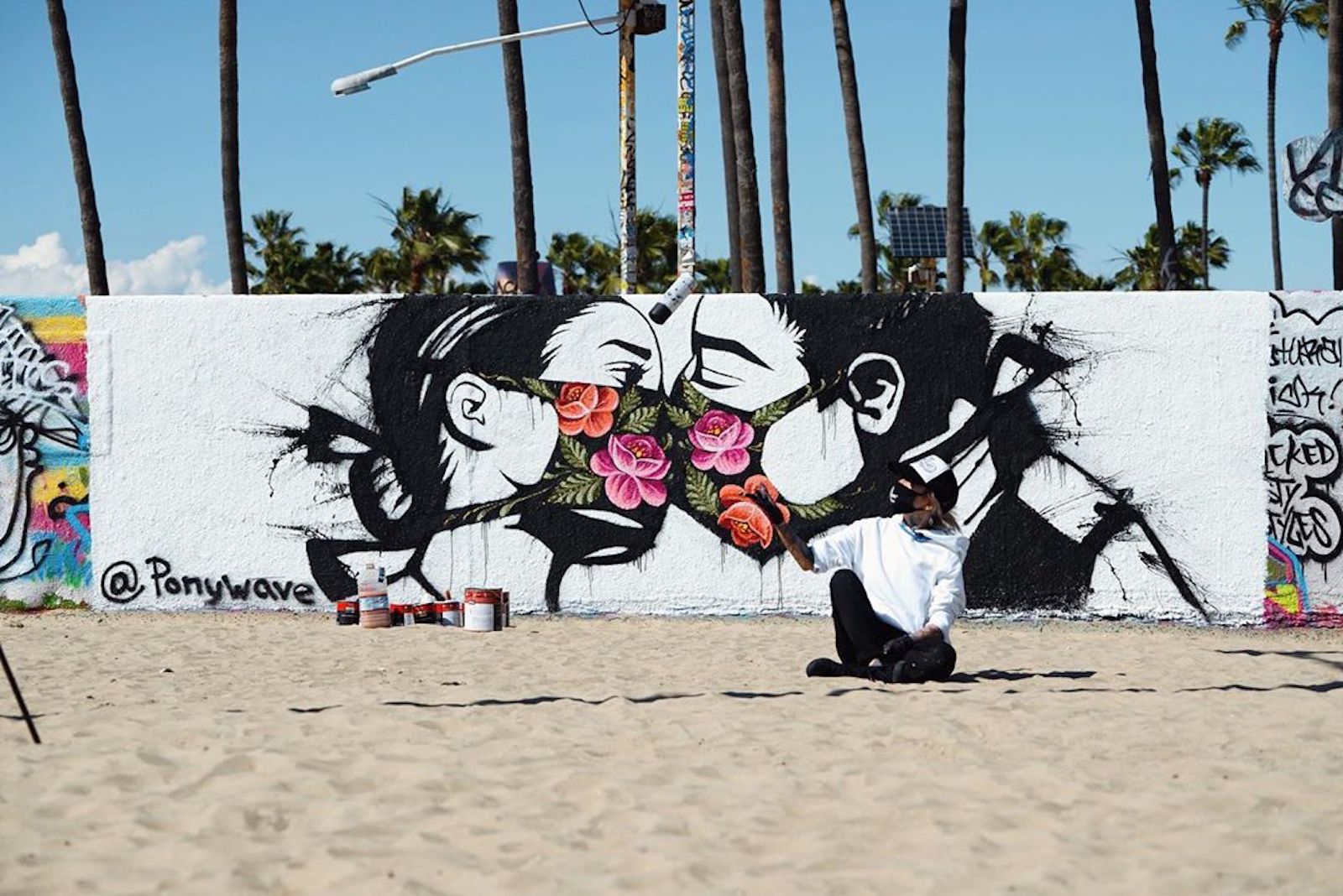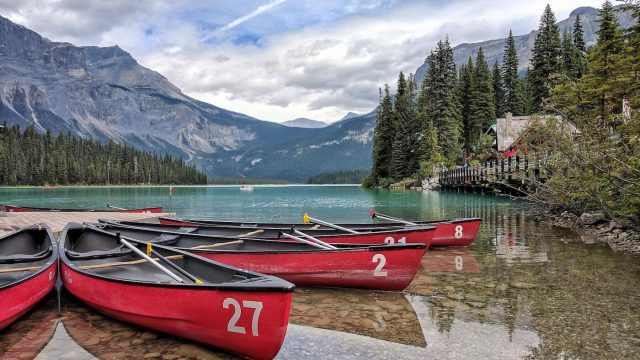Planning for the “new normal” in a post-COVID world

Image Source: @ponywave
Digital transformation happens when an organization identifies the need to embrace technology and sets out to make a meaningful shift, usually by changing how they acquire customers, deliver services, or operate internally. This time it’s all three of those things, and it’s not optional.
Most of us have now been forced to do business online, whether we like it or not. For some of us, the only real difference is that we have to substitute IRL meetings for Zoom calls. For others, it’s meant that the physical space that generated 75% or more of their revenue has been wiped out. The response has already been exciting to watch. All of those projects and ideas that once sat in the parking lots of meeting agendas, or were perpetually pushed to the next quarter are now happening. They’re changing our relationships with our audience; rather than them coming to us, we’re meeting them where they are. Every business is being forced to adapt to the needs and preferences of their audience because, at least for the moment, there is no alternative.
But what does the landscape look like after all of this has cleared? The behaviour shifts have been dramatic, but as much as we’re all making the best of it, we’re eager to get back to life as usual, so when will “normal” return? I’ll argue that it won’t.
We, as humans, are two things: resilient and adaptable. We have survived for many thousands of years specifically because of these two traits, and because of our ability to balance them. Our resilience shows up as our ability to rebuild. After every major tragedy, there are incredible stories of people who pick up the pieces. There are always humans who find ways to support each other and to restore the basic needs of food, water, shelter, and community. Our ability to be resilient is a defense mechanism that restores us – it’s a form of healing. Adaptability, on the other hand, is an evolutionary trait. It’s our ability to be dropped into just about any environment and not only survive, but thrive. We adapt physically (over generations), and behaviourally (over months, or years) to respond to the changing qualities and deficits of the world around us.
There is no question that when we re-emerge from our homes we will be resilient. We will get back to work, we will support each other, and we will create new forms of safety systems. The interesting question is how we will adapt. Of the new behaviours that we’ve taken on, which will we keep? Which will we discard?
I’ll share three adaptations that I’ve seen that I believe will carry on not just because they’re better than the old ways, but because continuing these behaviours will be easier and more beneficial than switching back. There are opportunities for us in each, as business people, to rebuild and to evolve.
Digital Complements to Analog Experiences
We’ve discovered over the past several weeks just how easy it is to receive 80% of the value that we were getting from our expensive classes for 20% of the price. When I say classes, I’m referring to simple ones like fitness, cooking, and language learning. I’m also referring to the more complex classes like universities and technical certifications. There is absolutely value in the physical experience that a person gets from learning, moving, and interacting with other humans in person, but how much, and how often?
Every business and every class provider should be seriously considering what the ideal blend of physical and digital value they can offer will be. The market will certainly contain a spectrum of providers — from exclusively online to exclusively offline — and the market will reward something in the middle.
We learned that we can save time and money by taking classes at home. We’ve been spoiled by the ability to select teachers from around the world, and we’re eager to get back to our communities and have experiences with other people again. The ideal solution is not Peloton, where we can have the best teachers in the world on our screens at home. It’s also not ClassPass where we can leave our homes to attend the best studios in town whenever we like. Those two forces will exist simultaneously, and the businesses that are able to provide balance will be the ones that deliver dramatically more value to their customers.
Privacy as a Feature
Social distancing is awkward, inconvenient, and also kind of nice. Have you walked through the aisles of a grocery store lately? The extra space to move and to shop is wonderful.
Until today, privacy has been a luxury reserved only for the wealthy. People pay extra to sit in pods at the front of the airplane, they pay extra for bottles at the VIP table, and they buy suites at sporting events where they are isolated from the public. When we are released back into the world to share physical space with each other, privacy will become not only a luxury, but a feature that some people will demand in their services and experiences.
Businesses will be able to attract people back to offline shopping when they limit the number of shoppers in their retail locations. That will enable them to plan their spaces differently, affording people the room to explore, and to have enhanced experiences and service interactions. Gyms and fitness classes will charge more for their limited-availability times and classes, theatres that guarantee more space between seats will fill up while others sit ironically empty, and hotels that guarantee extra space at the pool or in their restaurants will be the first ones booked.
Local Tourism
This one has three complementary behaviour shifts that will create one trend. First, the shift towards privacy will cause more people to own their own vehicles. We’ve already seen that in China’s recovery where markets that have reopened have had record vehicle sales, as people are now willing to pay to avoid sharing a bus or cab with other people. Second, we’ll be hesitant to get back on airplanes. And third, we’re going to be watching every dollar we spend.
When you put the three of those shifts together, the result is going to a major trend towards local travel.
The funny thing about local tourism is that the destinations we often overlook because they’re just driving distance away are often the same ones that other people fly from around the world to experience. What’s going to happen over the next few years is that people who previously would never have stayed at that resort just 300kms from home are going to fall in love with it, and they’re either going to become regulars, or they’re going to take that as a clue that there are many other undiscovered gems nearby.
Right now, every business and town that relies on tourism should be considering how they can shift their messaging to attract that local guest. Typically, local travellers need less convincing about the geography around you and are more interested in your service and amenities. They don’t need to be as educated about the activities and categories of excursions that you have available, they want to know why you’re the local expert and the best place to try it out.
Specifically, your local guest doesn’t want to be herded onto a bus and given a 3-hour tour of the landscape, they want to know that you know exactly where the best fishing spots are, where they can do the best birdwatching, and which local bar has the best Thursday night entertainment.
There will be many more fundamental shifts in our behaviour, and the entrepreneurs who are paying attention are going to create just as many creative new ways to answer those shifts. That’s why I’m optimistic about the “post”-COVID market. It’s going to be hard, and there will be businesses that fail through no fault of their own, but some of the most interesting and creative businesses that become some of the brightest spots in our economy are just now being dreamed up.


